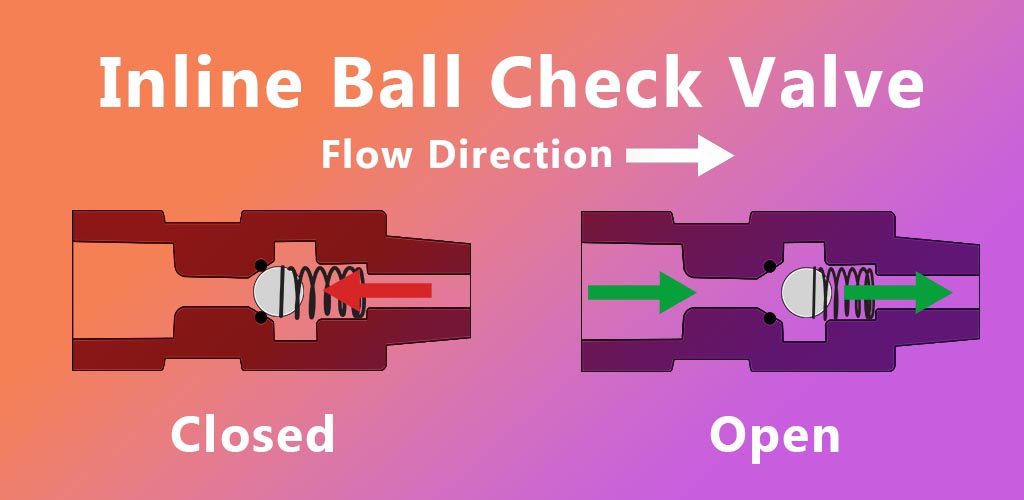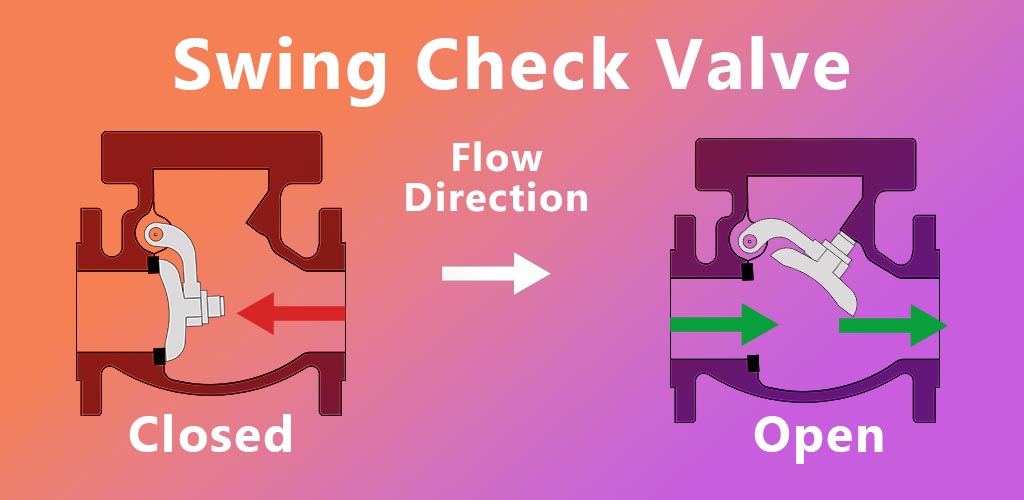
Whether you work with large diameter pipe, or tiny intricate precision tubing lines, check valves are incredibly useful. They can help pumps keep pumping, pressure vessels stay pressurized, and reduce waste from blow outs and line breakage.
How do they do all these things you may ask? Conveniently,that's the topic of today’s post. Read on to find out.
Not a reader? Check out our video on the topic right here
To put it simply, check valves act as a one way gate within your system. Pressure applied to the inlet will be able to pass with little impedance. However, if pressure is applied to the outlet side, the valve will close. This keeps media (gasses or liquids) flowing in the desired direction and preventing backflow.
This sounds like it would require some complex engineering or computer assistance to accomplish this. Nevertheless, check valves are typically quite simple in design and exclusively mechanically operated. This means that check valves are also highly reliable, especially from reputable manufacturers.
A check valves pressure rating refers to both the working pressure as well as what kind of pressure the valve closure can contain. It goes without saying that you should never use a check valve above the stated working pressure.
Most check valves fall into one of three major types of valves.
Each check valve type uses a different style of closure.
Ball check valves, as their name implies, use a ball to close the valve. Usually this is done by placing an o-ring seat around the internal inlet that the ball then seals against to close off flow. As pressure enters the valve, the ball is pushed out of the way allowing flow around it. When inlet pressure is reduced, the ball is pressed back into the seal.

On smaller inline versions a spring presses the ball into the seat. Some larger ball check valves do not have a spring. Instead, these use a heavy ball and gravity to close.
While this gravity is effective for some larger applications, these valves can only be mounted in one of just a few proper orientations. If the valve is mounted in the wrong orientation it could fail to function entirely.
Poppet check valves work in a similar fashion to inline ball check valves. The difference is that instead of a ball they use a small stamped or machined disk to close the valve. This disk is called a poppet.

Swing check valves are most commonly used on large diameter piping systems because they have the ability to be full port. These valves close using a large plate that's hung on a hinge at the top. As media enters that valve, the plate is swung out of the way allowing fluid to pass.

This valve, like the larger ball check, uses gravity to close. This means that is suffers from the same mounting orientation restrictions.
Though check valves do exactly one thing, they can be used for a multitude of situations and designs.
Say for instance you had a large pump moving water. If you turn the pump off, the water in the pipe might back flow through the pump causing it to lose prime. Running a pump without prime can damage it. Adding a check valve in conjunction with the pump would prevent the reverse flow, maintaining prime and preventing damage on the next start-up.
Another example would be systems where multiple sources mix inline. Adding check valves to the end of each of the source chemical feed lines will help to keep the original source containers free from cross contamination.
Check valves are even frequently used in domestic homes. Typically, a form of check valve is installed on washing machines, lawn sprinklers, and garden hose spigots to prevent unsanitary water from siphoning back into the sanitary water supply.
When adding a check valve to your system there are a few factors to consider.
The first thing to consider is the connection size that you are working with. This can seriously impact the amount of type options that are available. If you are working in flanged pipe for instance, you'll most likely be limited to swing and gravity operated ball checks.
Next, figure out the minimum amount flow needed for your application. You'll want to choose a valve that, at very least, meets your flow needs. These numbers can be calculated using CFM (Cubic Feet Per Minute) or Cv (Valve Flow Coefficient).
Finally you'll need to choose a cracking pressure that is adequate for the task. Since cracking pressure is a topic that's a little more involved, I've given it its own section.
Cracking pressure is a set pressure that is based on the strength of the spring in the valve. A common cracking pressure is 10 PSI, with no external factors, that is the pressure that would be required to open a valve of this rating. However, it's not quite that simple. There are a couple of things that can affect how this number actually comes into play.
Back pressure adds to the cracking pressure of the valve. By this I mean that if you had a system containing 200 PSI and a check valve on the feed line with a 10 PSI cracking pressure, you would actually have to generate 210 PSI at the inlet before the valve would open.

The valve pictured here is not open, eventhough the back pressure and forward pressure are the same. This is because forward pressure must also overcome the added 10 lb. of the spring.
On mostly linear systems, this may not make a noticeable difference. Nonetheless, if you are putting a check valve near a tall vertical run, the weight of the contents of the line will change the the cracking pressure. If the check valve is oriented to feed the vertical, it will add to the cracking pressure. If it is oriented to be fed by the vertical, it will subtract from the cracking pressure.
The customer care team here at Mako would love a chance to help! We keep a wide range of check valve options in stock and can help you choose the right one for your application. Just drop us a message below and we will get back with you as quickly as we can.
Check out our blog for the latest updates and how-to's from Mako Products!